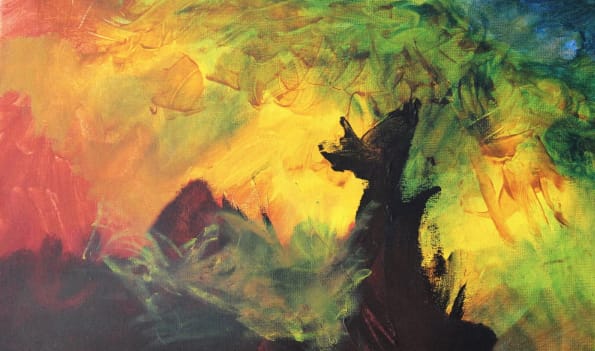On Art Interpretation

I was at MOMA in NYC last weekend and came upon an idea.
I have many friends who claim an inability to be creative. They’re experts in their fields, and are able to cite and invoke any number of concepts and points when called upon, but when asked to create something new they become immobile.
What struck me in MOMA was the reason for this.
Art interpretation
[ NOTE / CAUTION: I know virtually nothing about art. That’s not modesty; that’s fact. ]
I see art as visual poetry, and I see poetry as saying what cannot be said. There are obviously many types of art, but I’m referring to art that is abstract to at least some degree—art that requires some sort of interpretation.
This is where the two criteria come in. You must have one of these to be good at interpreting art:
Creative Confidence: the ability to create something from nothing, and be proud of it. This is borderline arrogance, as it requires a belief in oneself that flirts with hubris.
Innocence: a childlike view of the world, that allows one to look at something abstract and see something beautiful, or wondrous, or, well…anything.
We as adults tend to need the first, since the second is usually closed off to us.
This essentially means creative hubris. It means believing that one can weave a narrative from an abstract piece of art, and say it out loud without shame. It means believing in yourself, as this is synonymous with believing in what you can create.
I find this fascinating.
An exercise
What I did with my friend at MOMA was this:
Take a piece of abstract work and study it for approximately one minute
Take turns weaving a narrative for what you see jumping out at you (easy), or what you could see (hard)
This flexes muscles most never use, and it’s quite enjoyable.
We did this, this friend and I, for approximately 10 pieces of work over three hours. It was exhausting, but it was a remarkably intimate experience.
It’s a bonding experience with your friend, as each analysis you give exposes more about yourself than you’d imagine. And the key is how it’s accepted by the other friend. Sometimes your narrative is not as piercing as it could have been, or it’s a bit too cliché, and your partner can then react in a kind way before offering his interpretation.
Here are the rules:
Be extremely open and ambitious with your interpretations. Be courageous, and believe in yourself as you do so. Trust that if you fall flat, your partner will look away while you right yourself.
Listen to your partners’ narratives with an unshakable acceptance. Embrace them whether they are feeble or brilliant, and only offer feedback in order to extract more of their comments.
Attempt to learn more about your friend through their analysis.
Attempt to learn more about yourself through your own analysis.
Hopefully you get the idea. I’ll call this Narrative Sharing, and I recommend it enthusiastically.